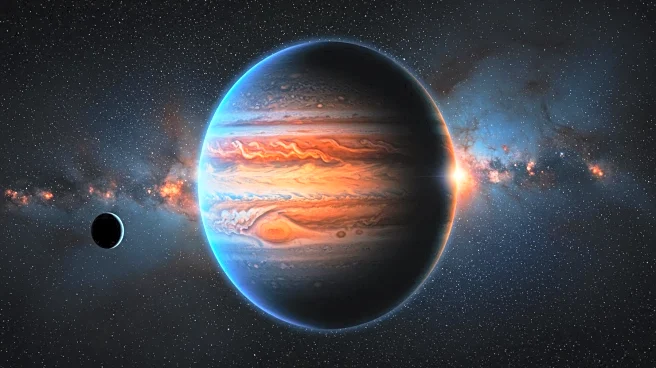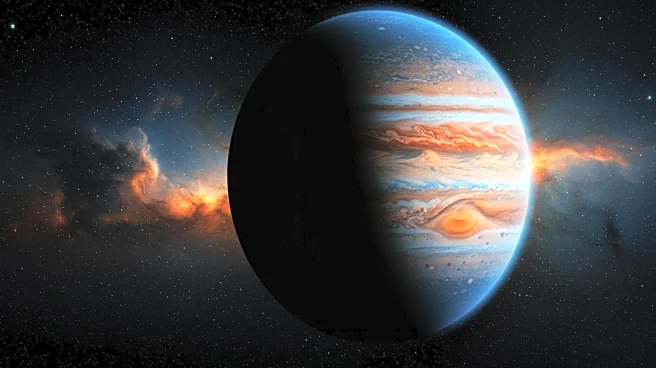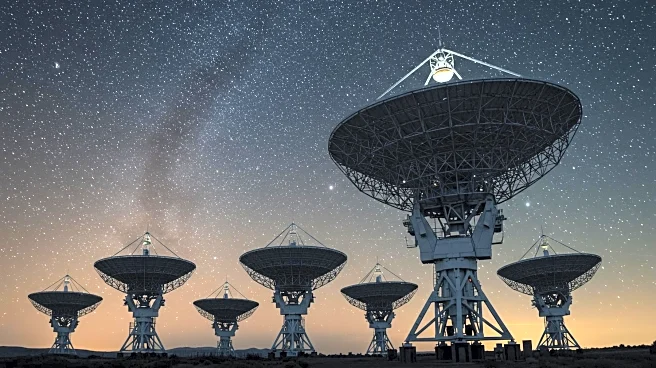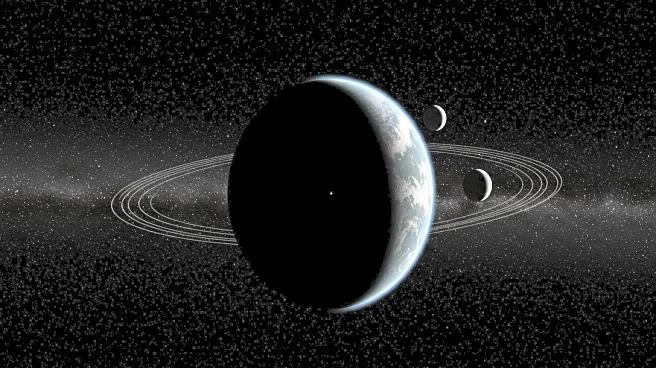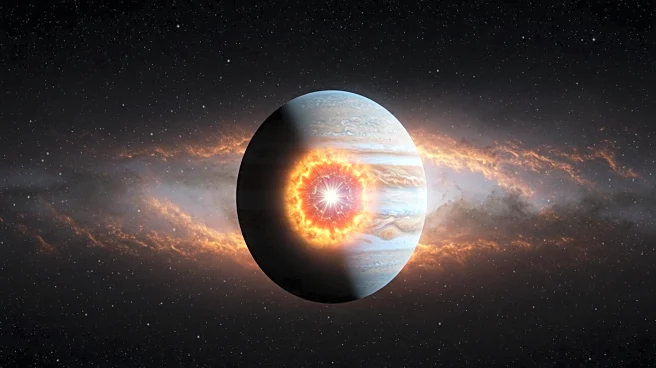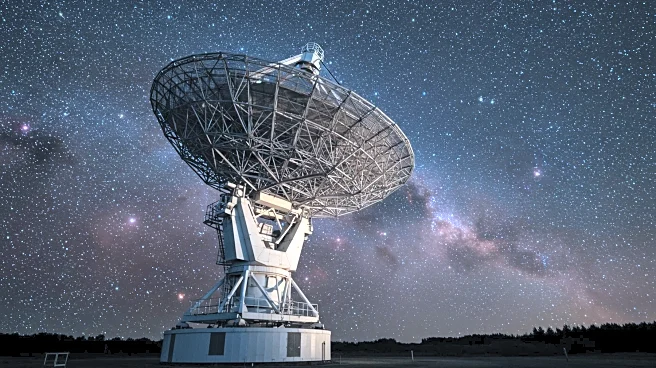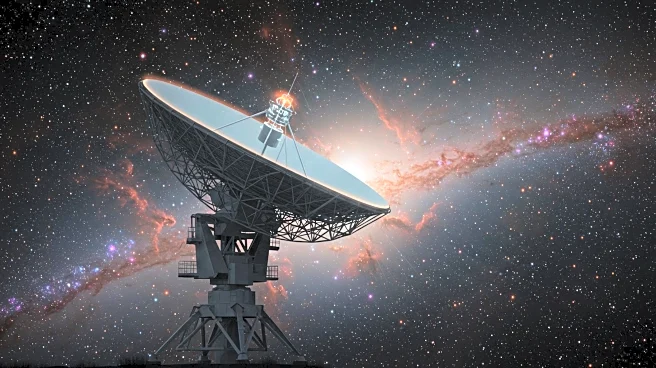What's Happening?
Recent research conducted by Durham University, in collaboration with NASA, SETI, and CENSSS, has challenged previous theories about the formation of Jupiter's core. The study, published in the Monthly Notices of the Royal Astronomical Society, utilized supercomputer simulations to explore the possibility of a massive collision being responsible for Jupiter's dilute core structure. Contrary to earlier beliefs, the simulations showed that such an impact would not result in a stable dilute core. Instead, the dense core material displaced by an impact would quickly re-settle, creating a distinct boundary with the outer layers of hydrogen and helium. This suggests that Jupiter's core formed gradually as the planet absorbed heavy and light materials during its growth and evolution.
Why It's Important?
The findings have significant implications for our understanding of planetary formation and evolution. By demonstrating that Jupiter's dilute core is not the result of a rare, high-energy impact, the study suggests that similar structures may be common among other gas giants, including Saturn. This insight could reshape scientific interpretations of exoplanets with Jupiter- and Saturn-like characteristics, potentially indicating complex interiors formed through gradual processes. The research also advances simulation techniques, offering more detailed insights into planetary impacts and their role in shaping the diversity of worlds within our solar system and beyond.
What's Next?
The study opens new avenues for further research into the formation of gas giants and their cores. Scientists may focus on refining simulation methods to better understand the gradual processes that lead to dilute core structures. Additionally, the findings could influence future missions and observations aimed at studying exoplanets, as researchers seek to apply these insights to distant planetary systems. Continued collaboration between institutions like NASA and Durham University will be crucial in advancing our knowledge of planetary science.
Beyond the Headlines
The research highlights the importance of interdisciplinary collaboration in advancing scientific understanding. By combining expertise from various fields, the study not only challenges existing theories but also enhances simulation capabilities, paving the way for more accurate models of planetary formation. This approach underscores the value of integrating diverse scientific perspectives to address complex questions about the universe.
